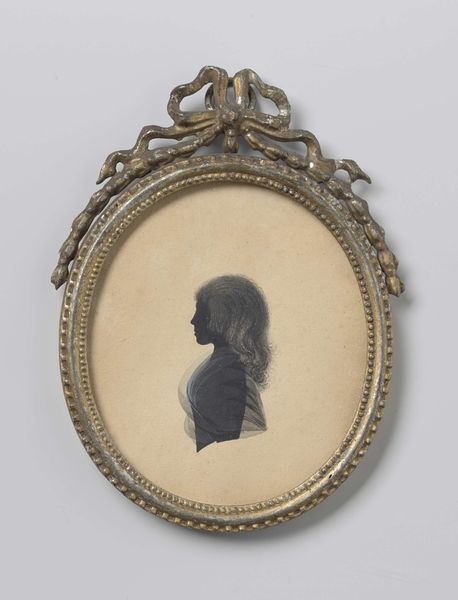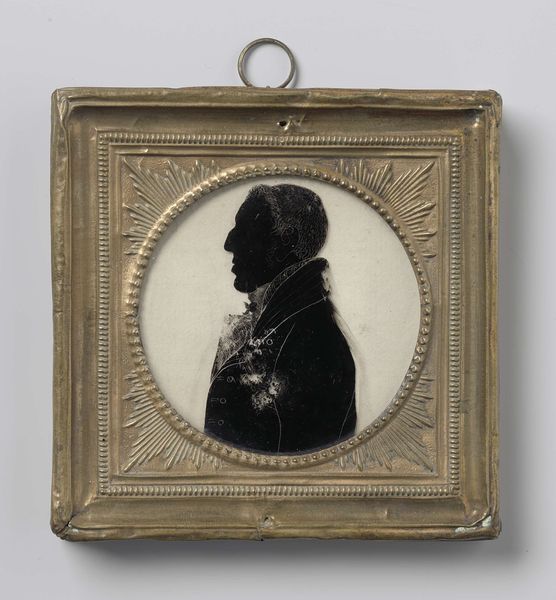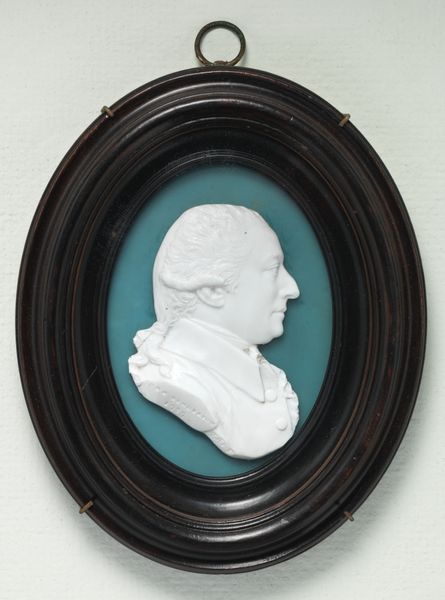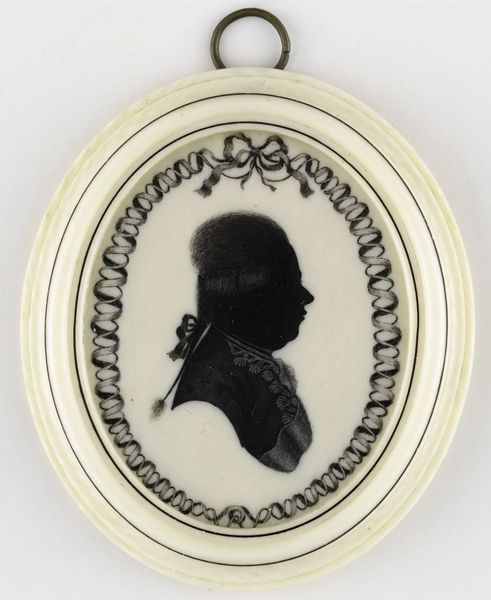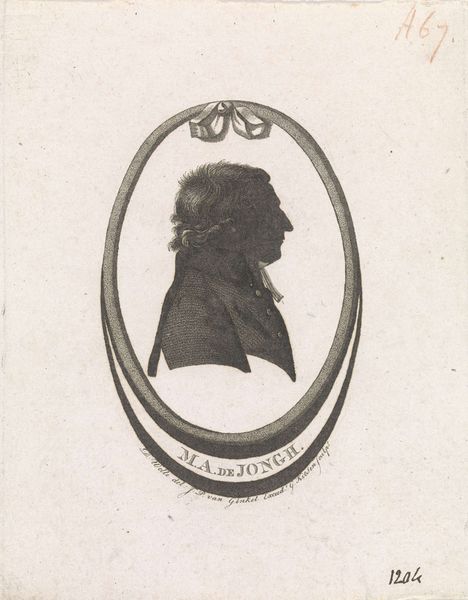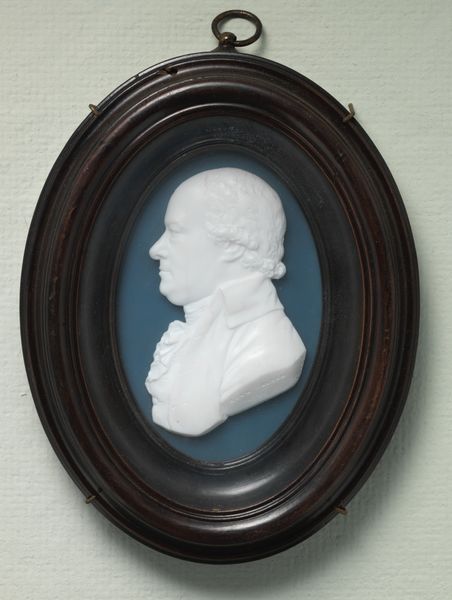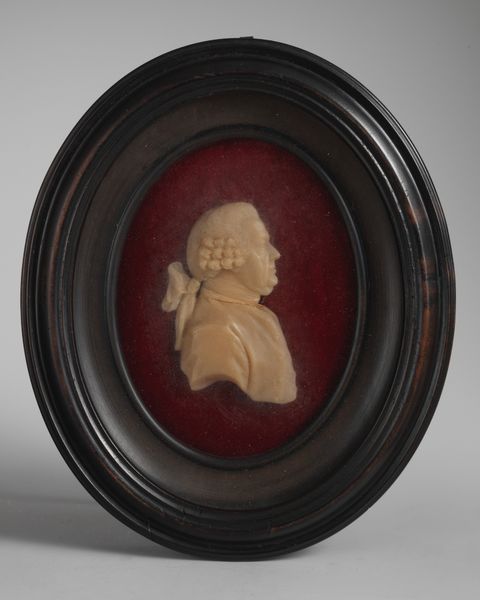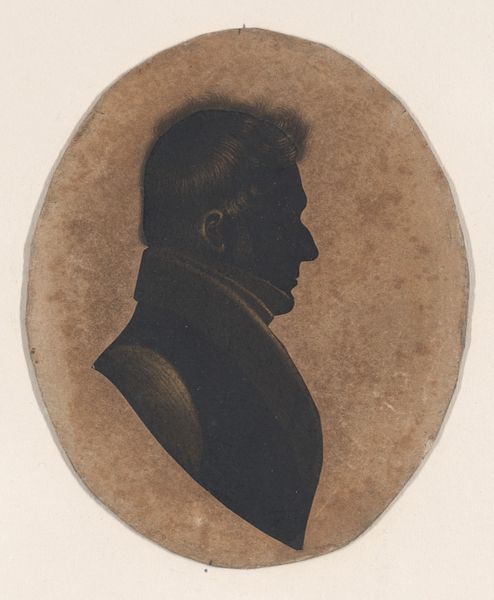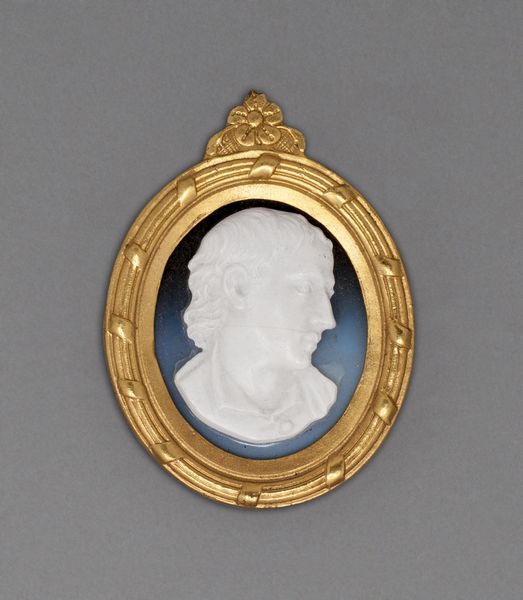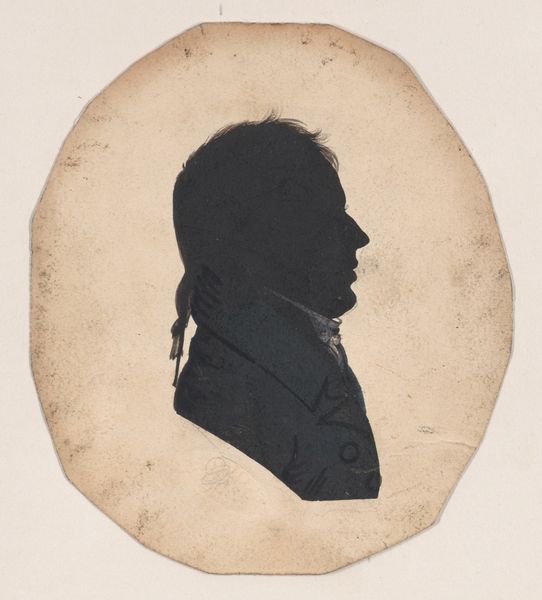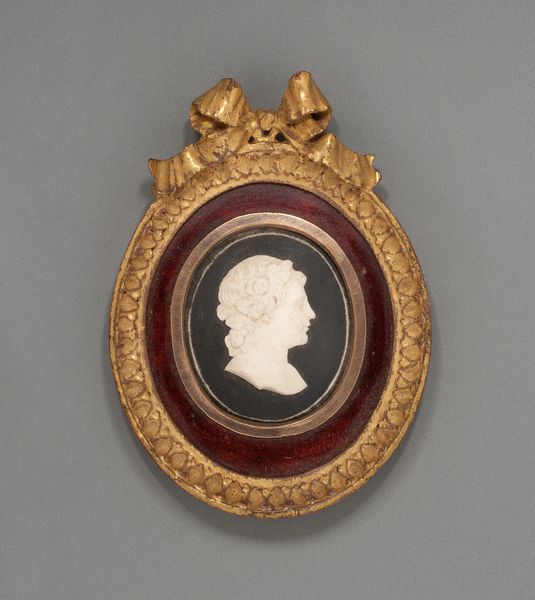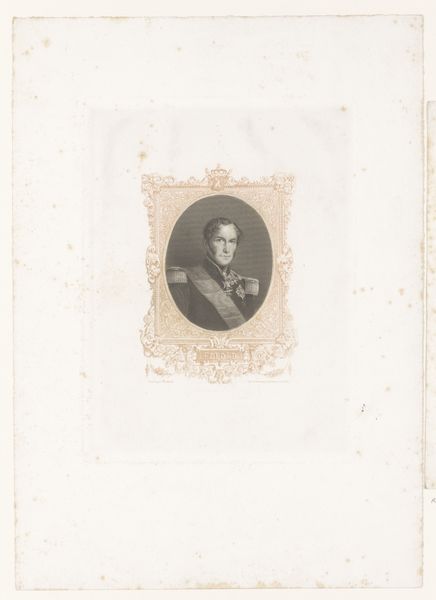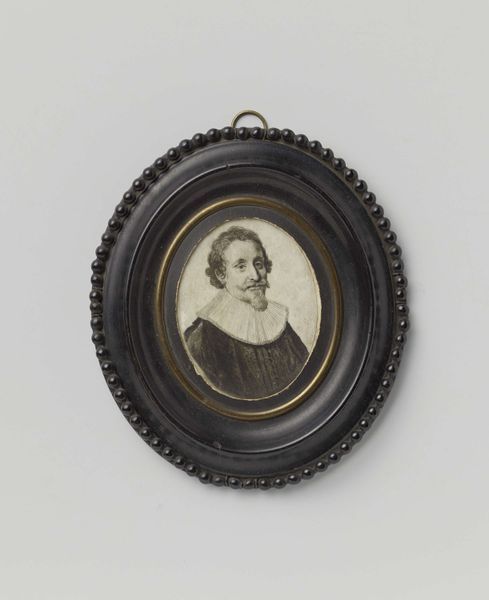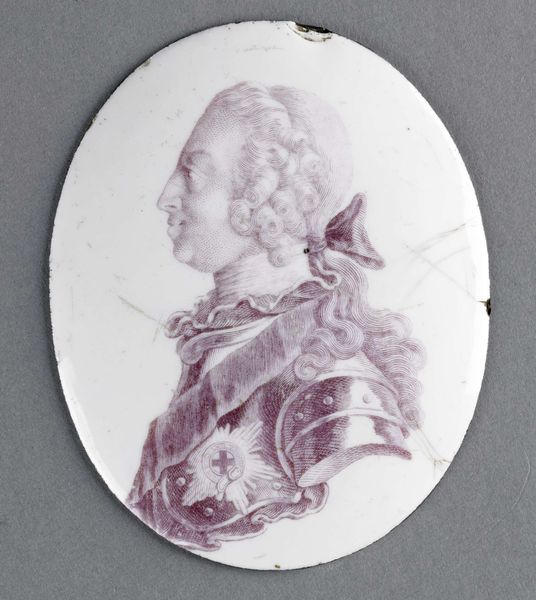
drawing, paper, ink, pencil
#
portrait
#
drawing
#
neoclacissism
#
sculpture
#
paper
#
form
#
ink
#
pencil
#
line
Dimensions: height 10.2 cm, width 8.7 cm, height 13.6 cm, width 10 cm, depth 0.9 cm
Copyright: Rijks Museum: Open Domain
Editor: This is "Silhouet portret van een man," a silhouette portrait of a man, made between 1790 and 1800, using drawing, paper, ink and pencil. It has a stern and distant air about it. How do you interpret this work within the broader context of its time? Curator: This silhouette provides a window into the late 18th century and the rise of portraiture among the middle classes. These weren't just likenesses; they were statements of identity and status in a rapidly changing society. Think about it: what does it mean to capture someone's essence, stripping away color and detail? Is it about control, memory, or perhaps even challenging aristocratic norms? Editor: It seems so… minimal. A stark contrast to the elaborate portraits of royalty. Curator: Exactly! Consider Neoclassicism's influence; a move towards simplicity and reason, away from the ornate Rococo style favored by the aristocracy. How does the reduction to a stark outline speak to the Enlightenment values of rationality and order? And further, think about how such simplicity makes portraiture accessible beyond the elite. Does this democratization of images impact how identity is perceived and performed? Editor: That's a really interesting point about accessibility. I hadn't considered it that way. So, by removing all those layers of ornamentation, were they also trying to strip away social artifice? Curator: Precisely. It’s an act of asserting identity during a period of immense social upheaval. It’s also interesting to consider that the sitter is white. Who has the privilege of being immortalized, even in silhouette? Whose stories are prioritized? It forces us to question the silences, the absences in the historical record. Editor: I see how this simple silhouette opens up all these questions about identity, class, and representation. Thank you for pointing that out. Curator: It reminds us that even seemingly straightforward artworks can be powerful vehicles for understanding the complexities of their time and our own. It is amazing how it holds an abundance of untold stories!
Comments
No comments
Be the first to comment and join the conversation on the ultimate creative platform.
